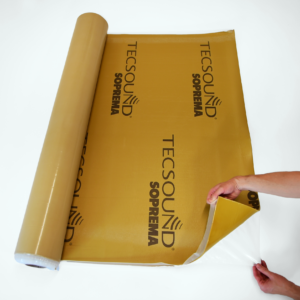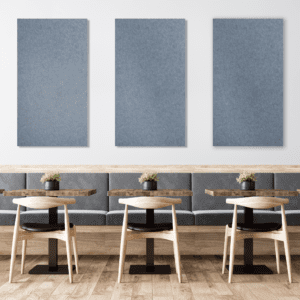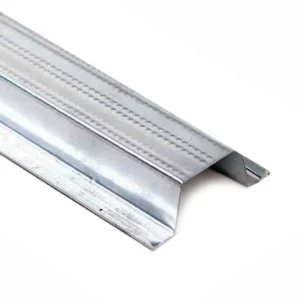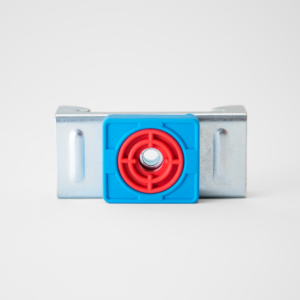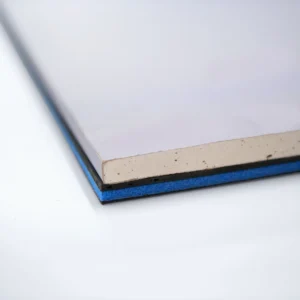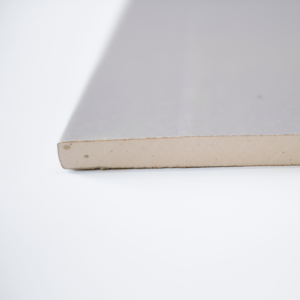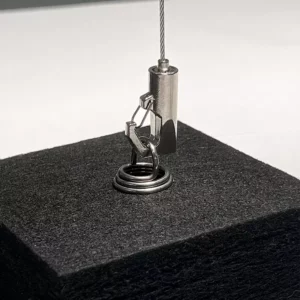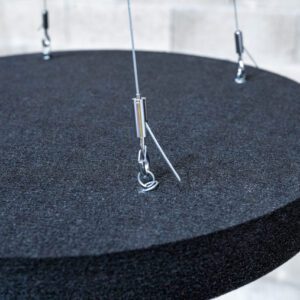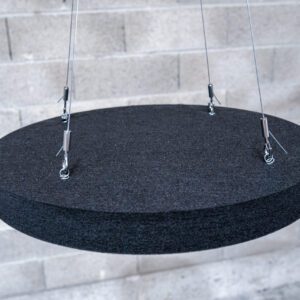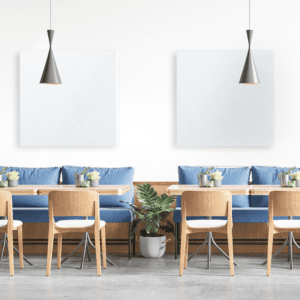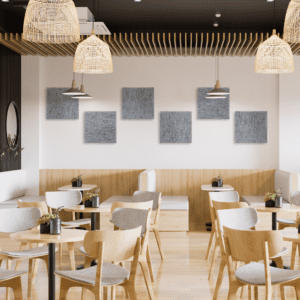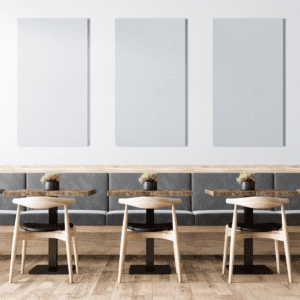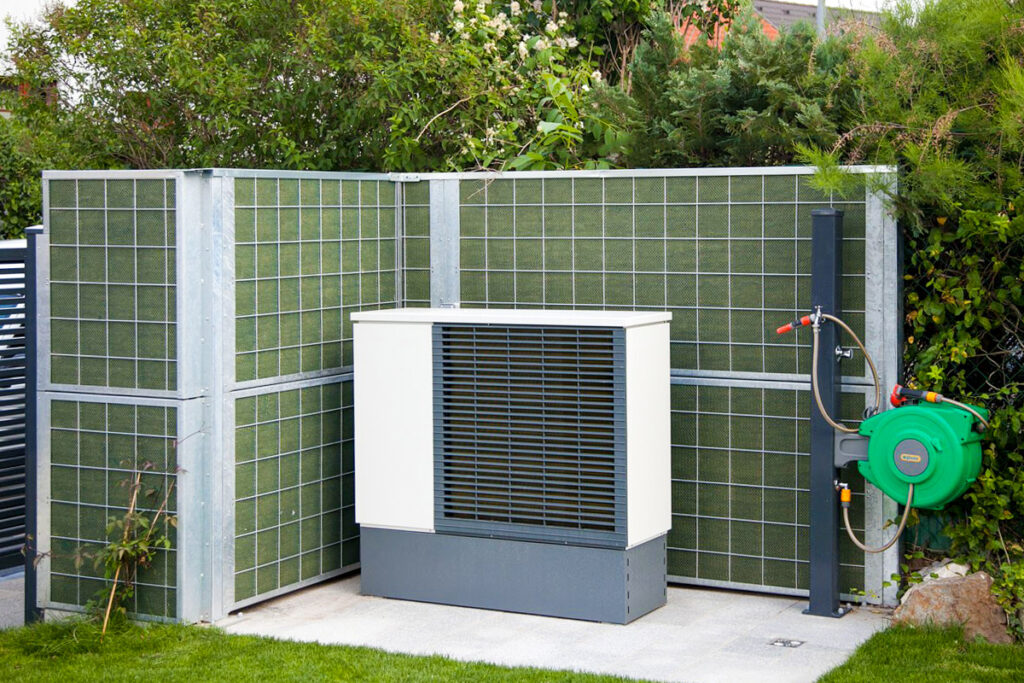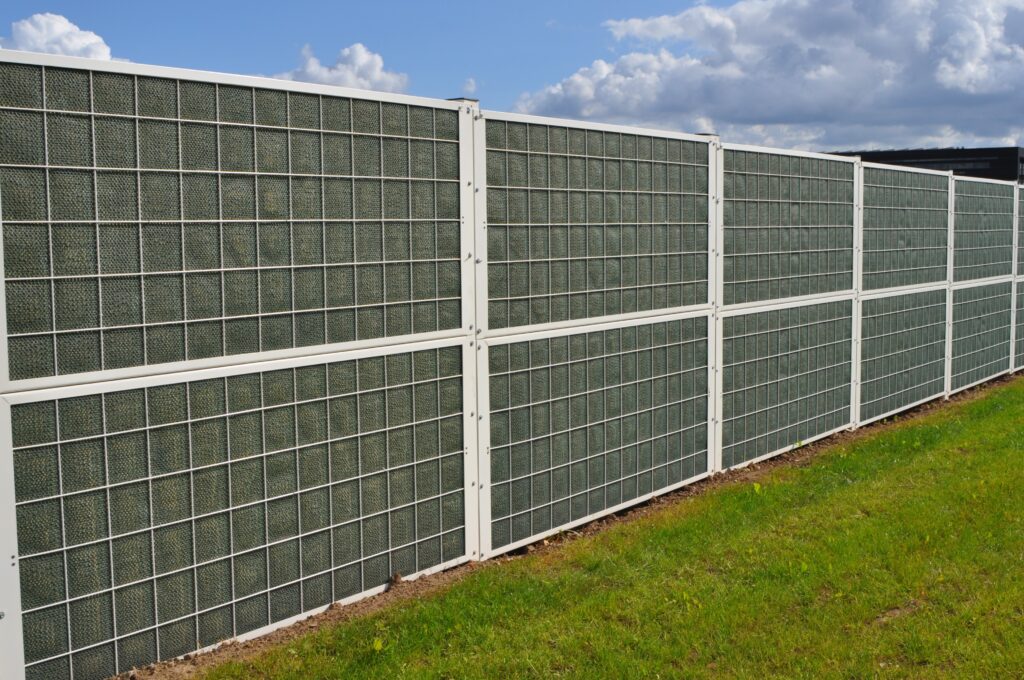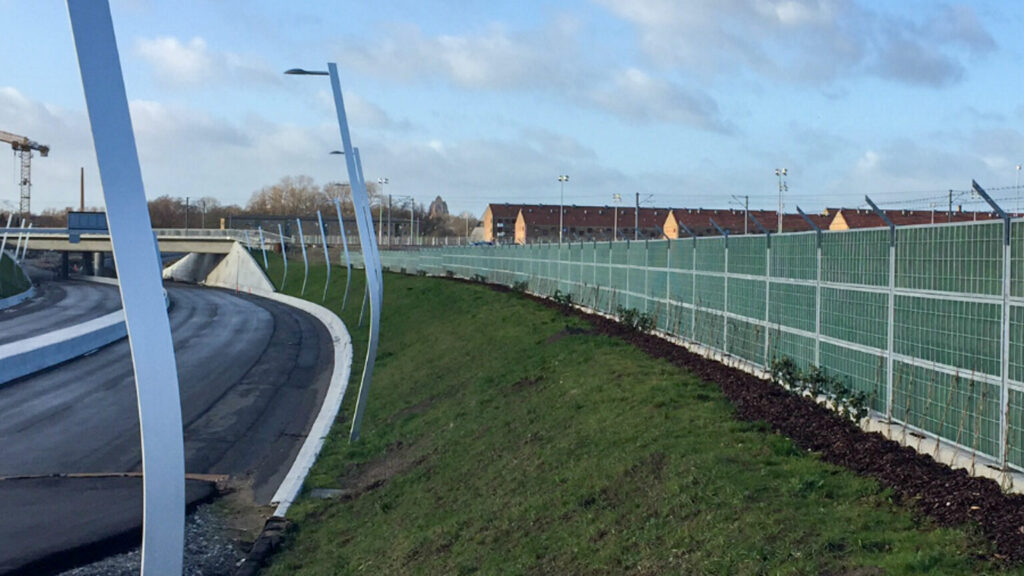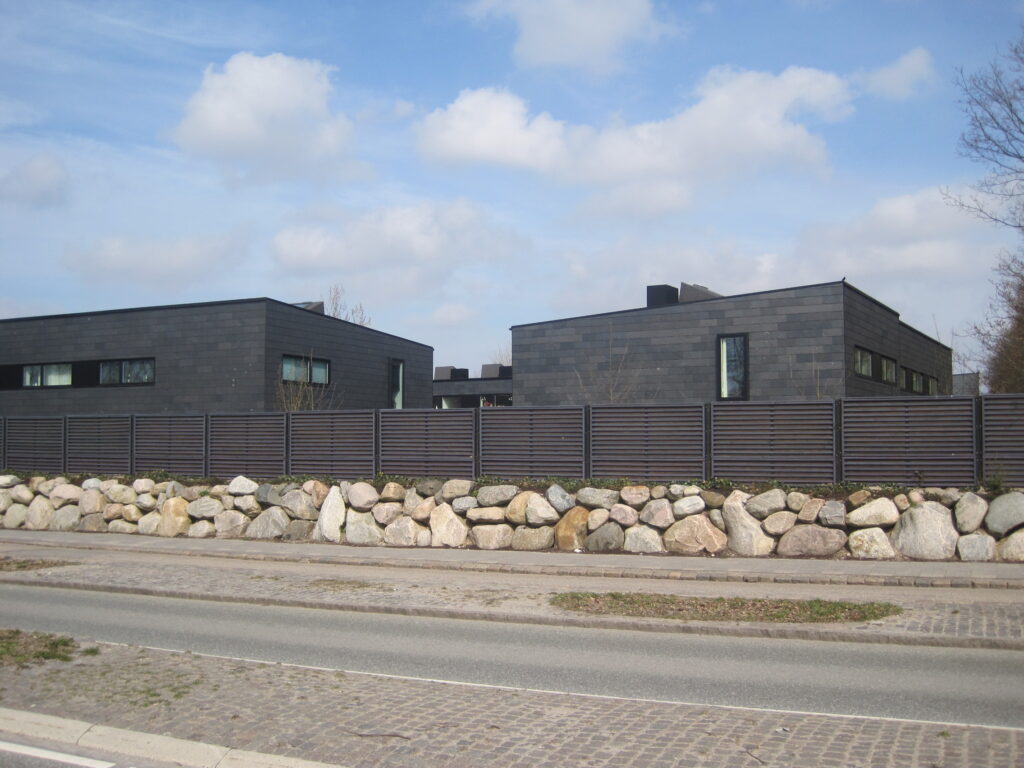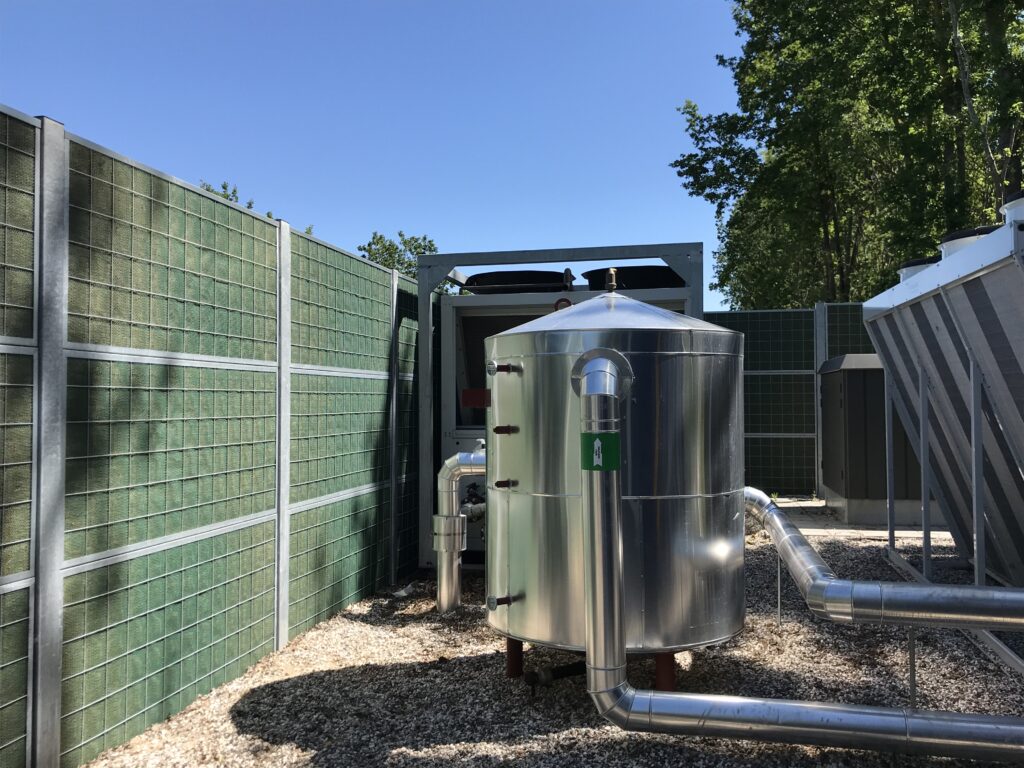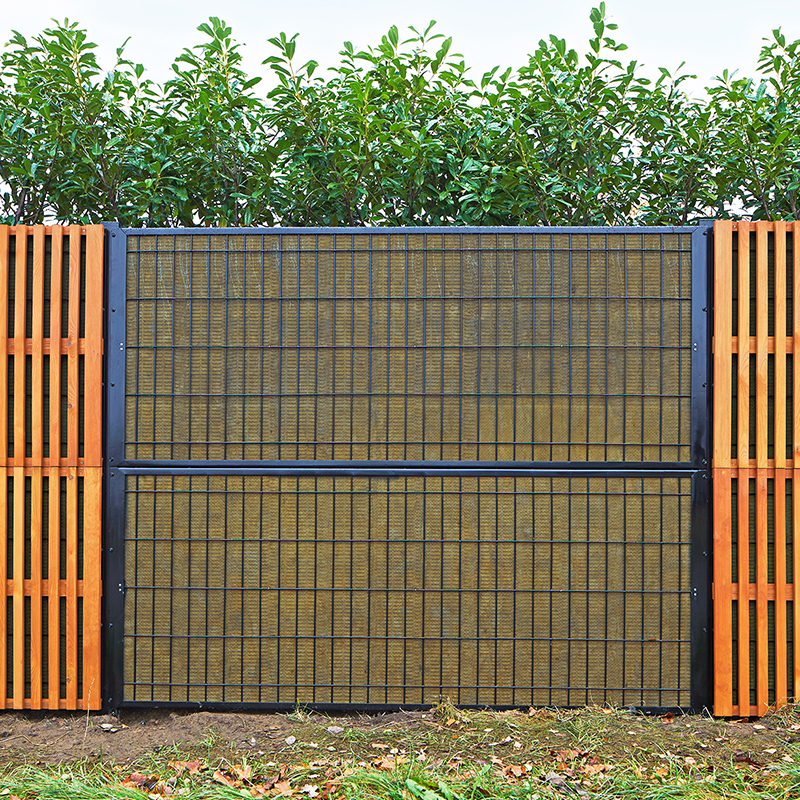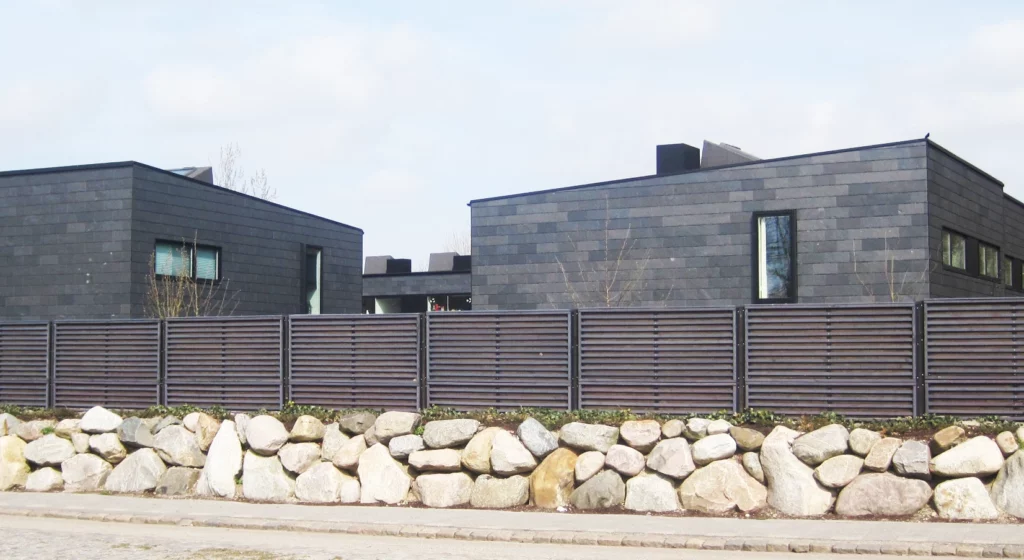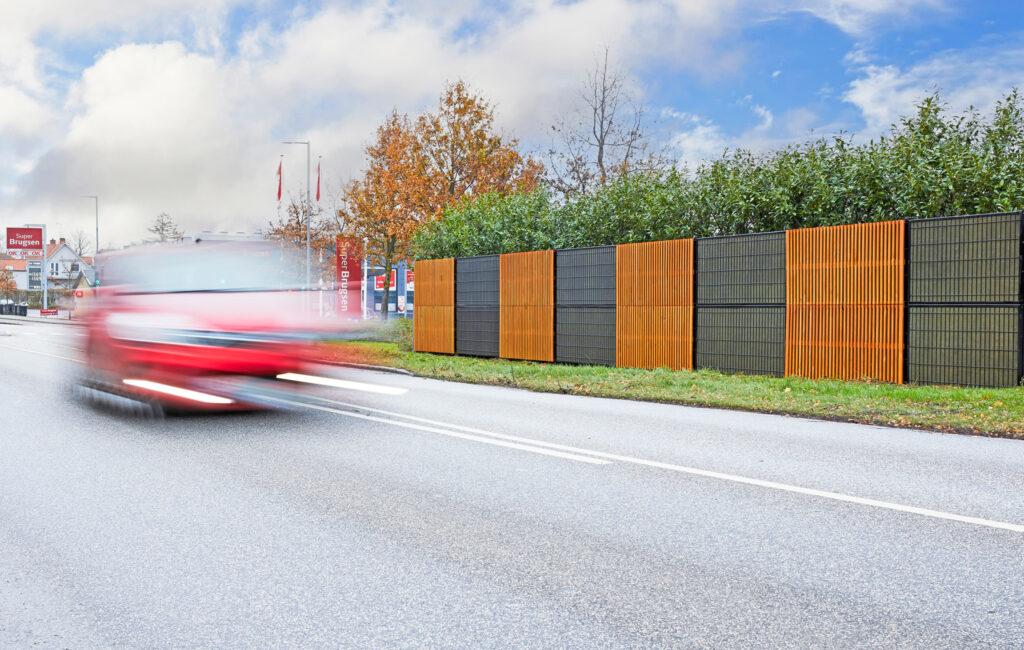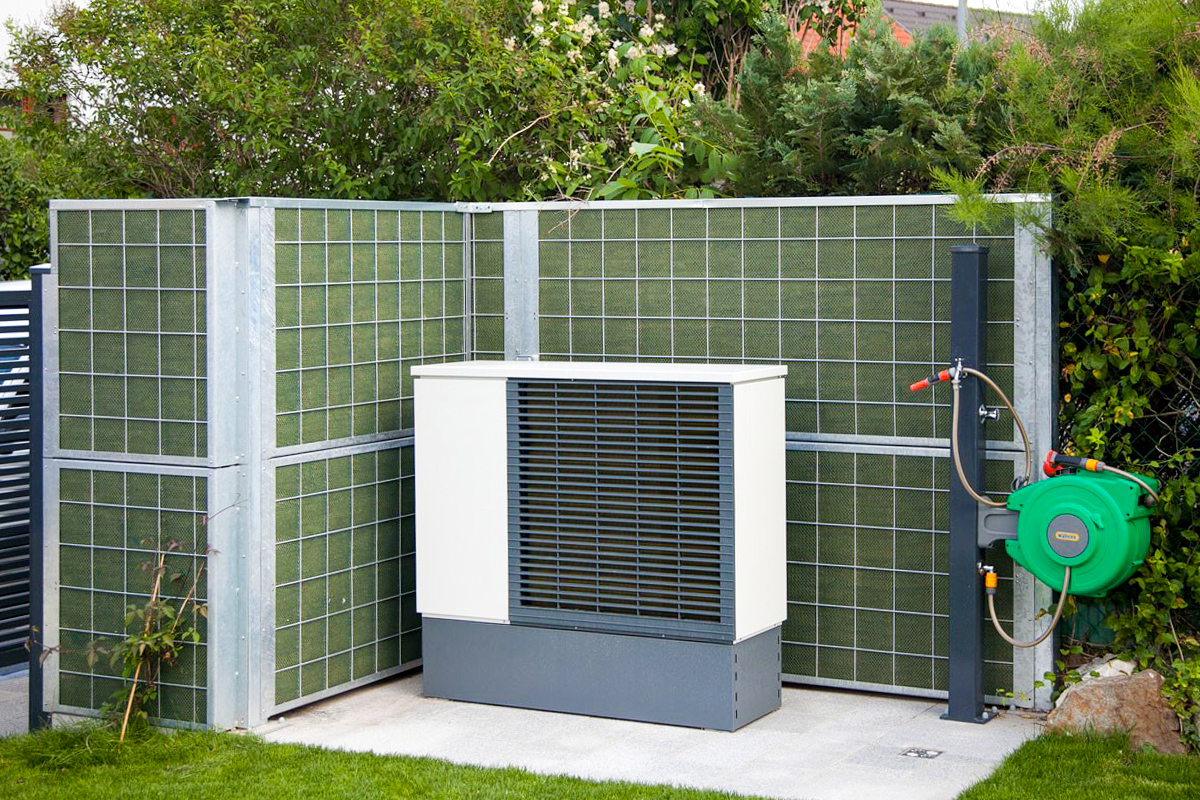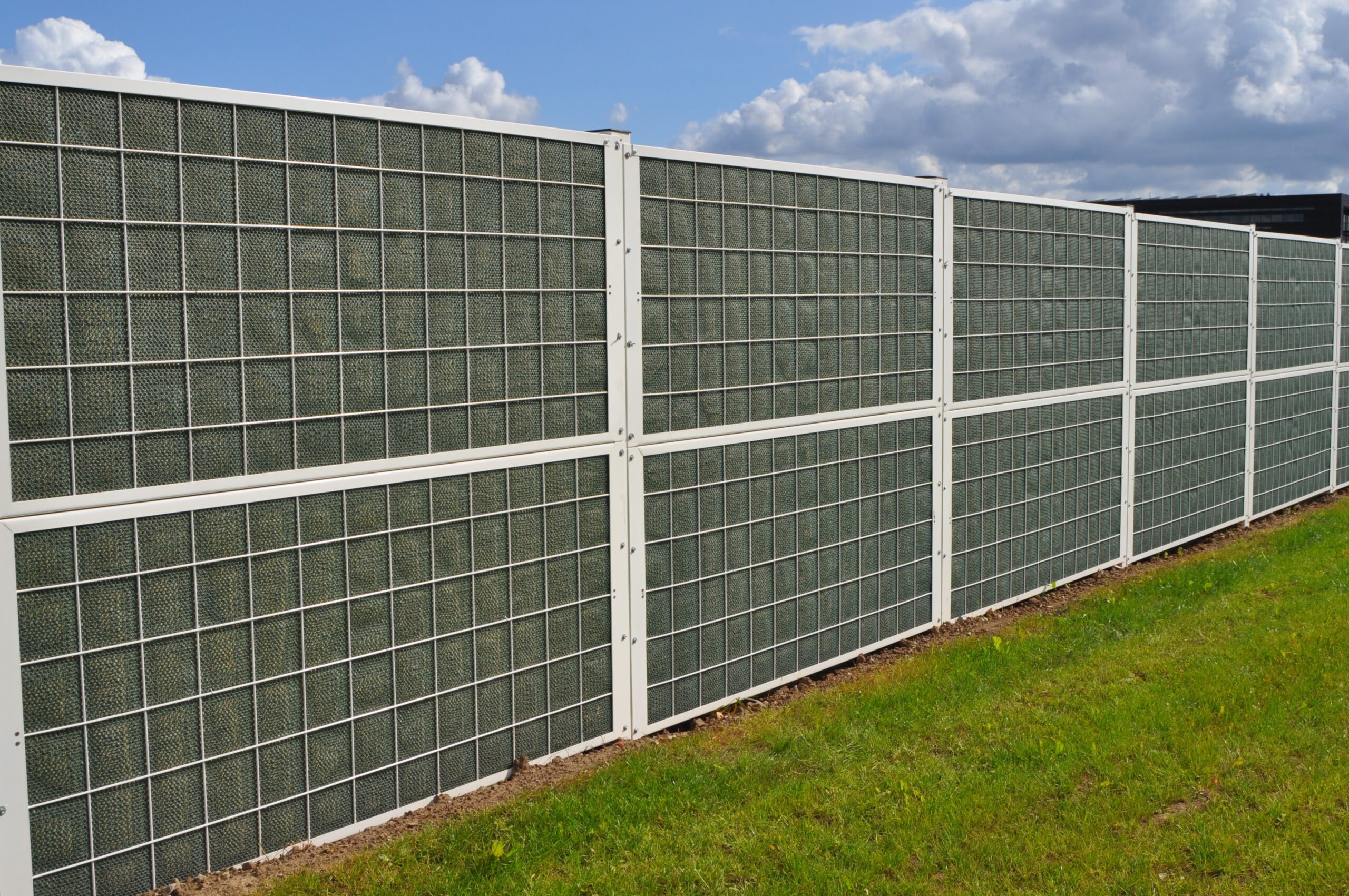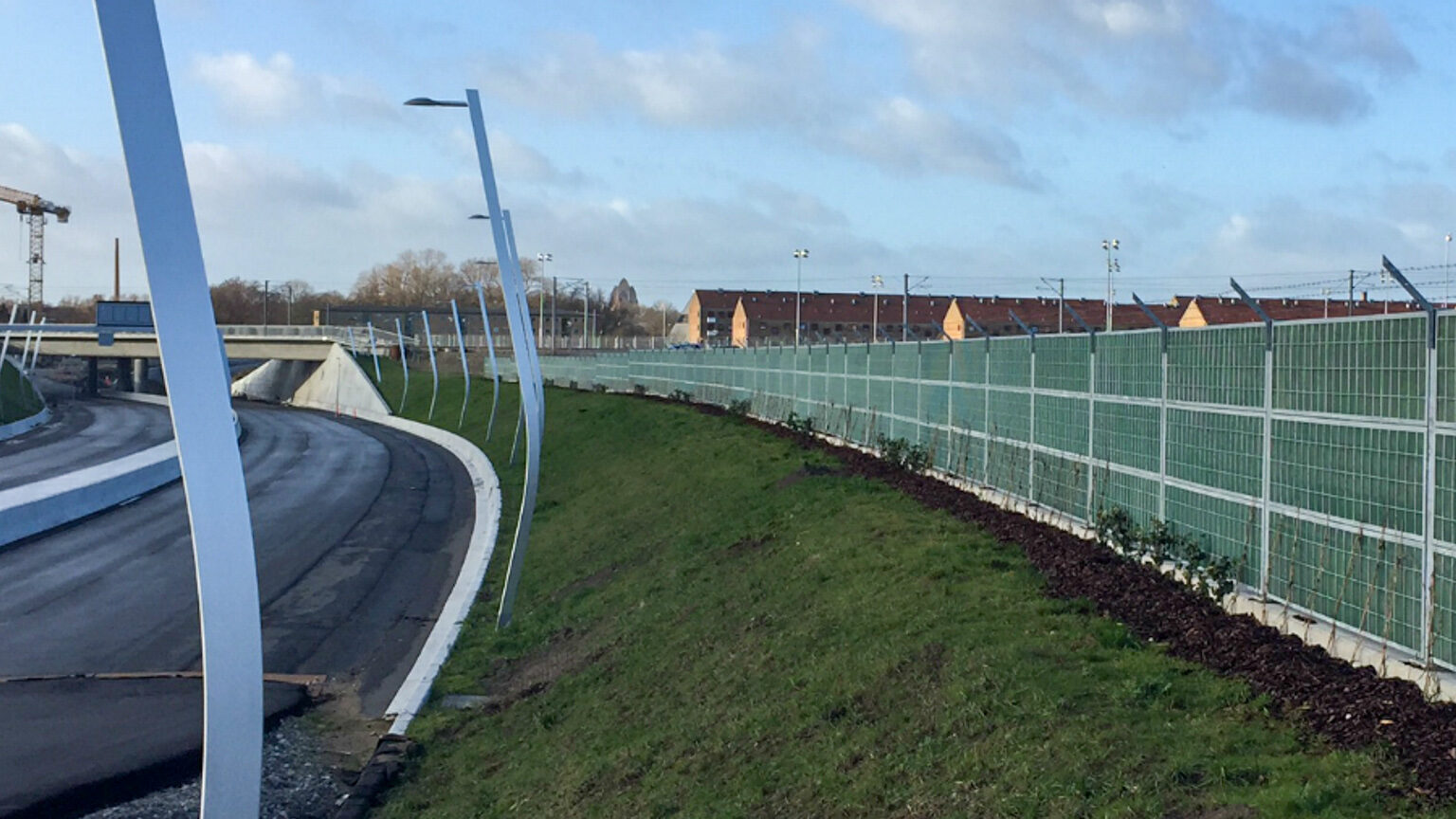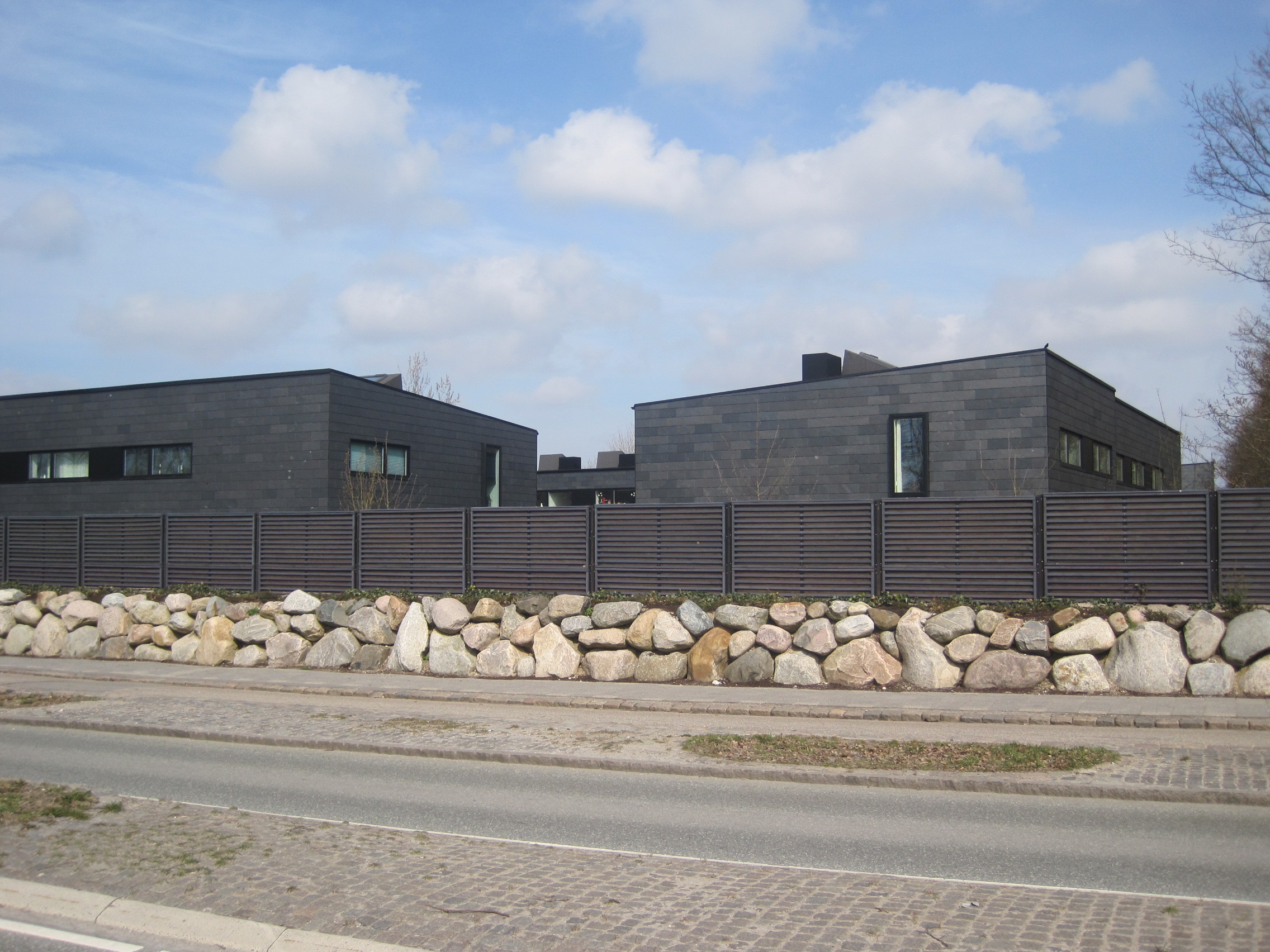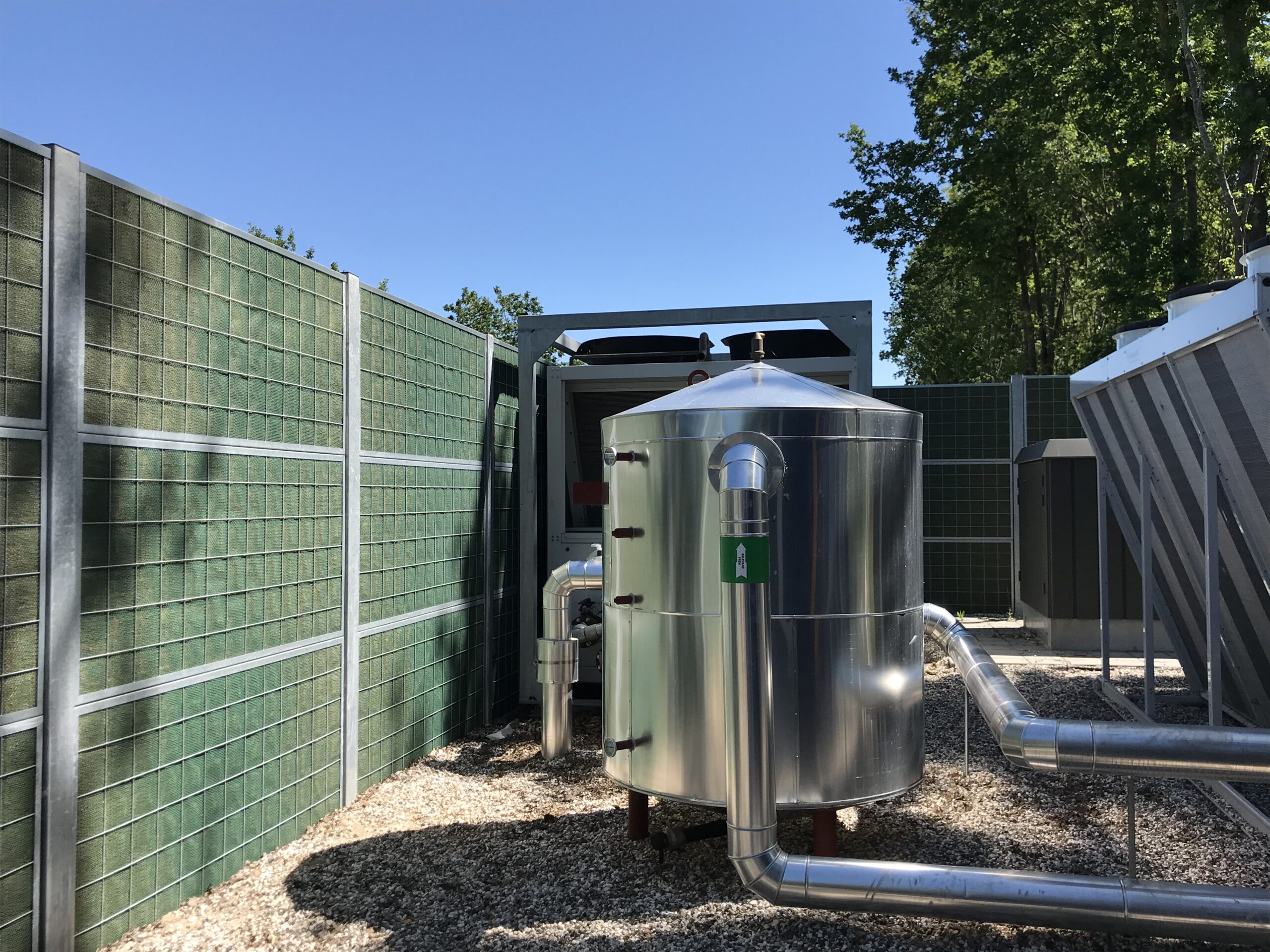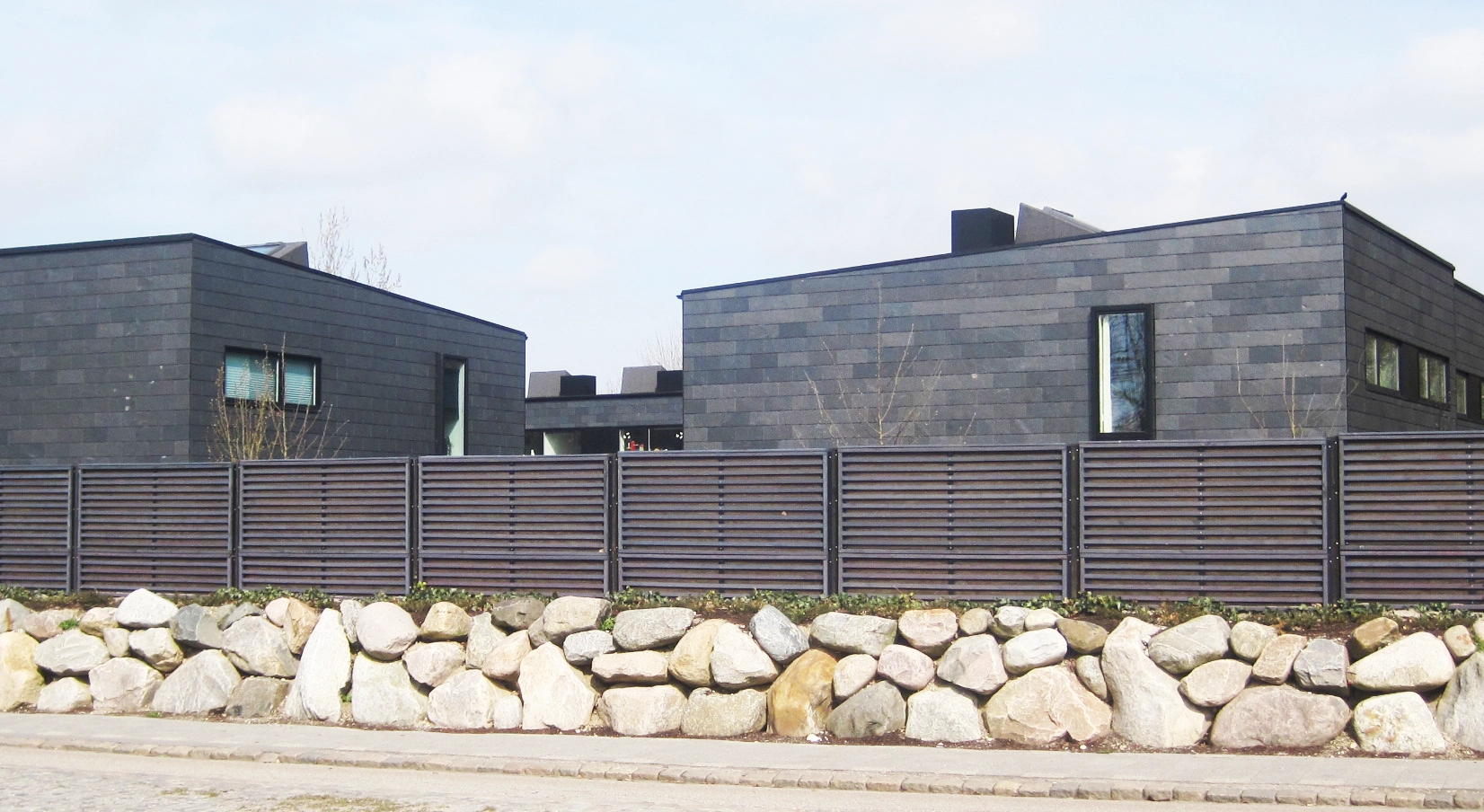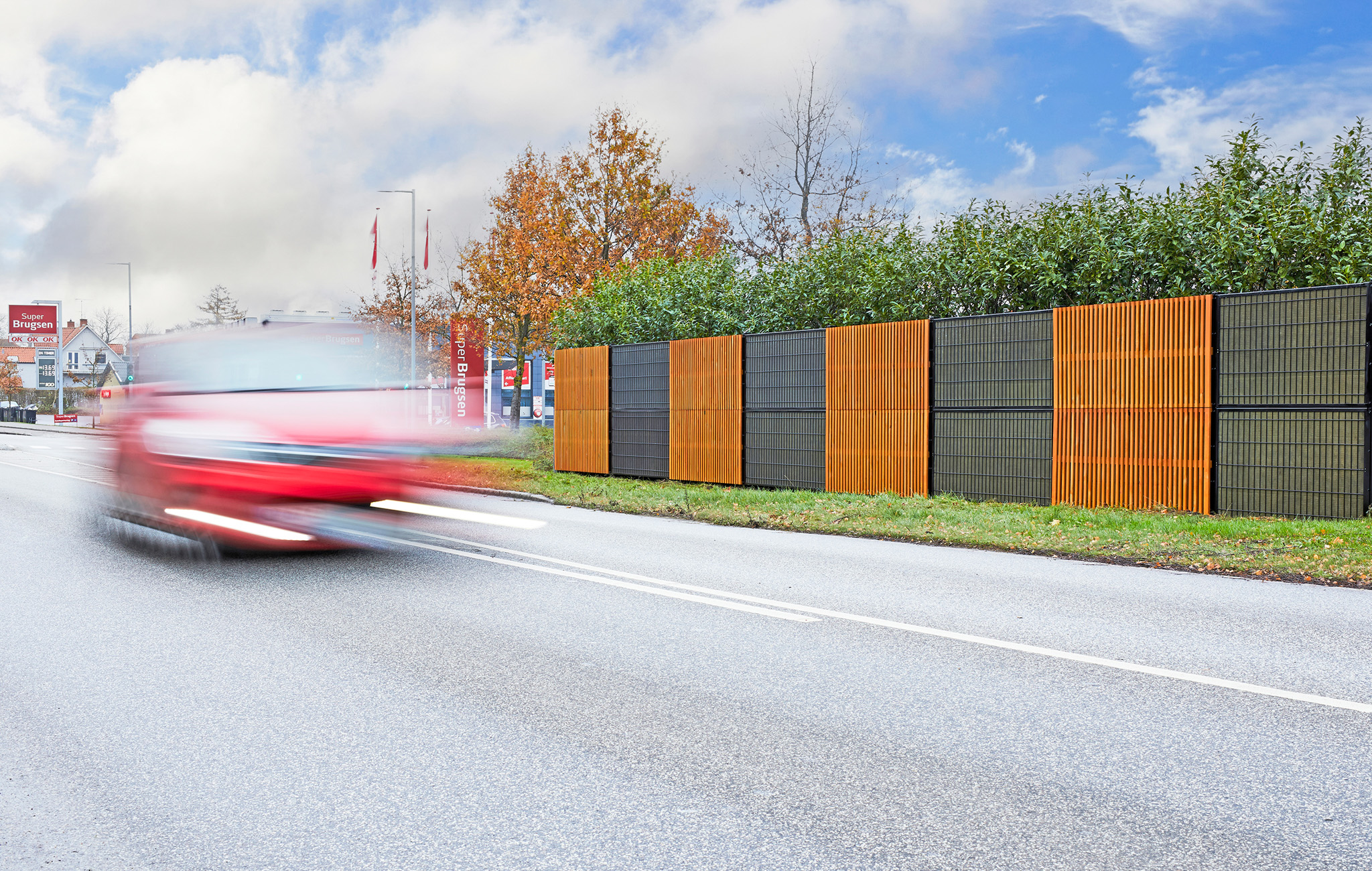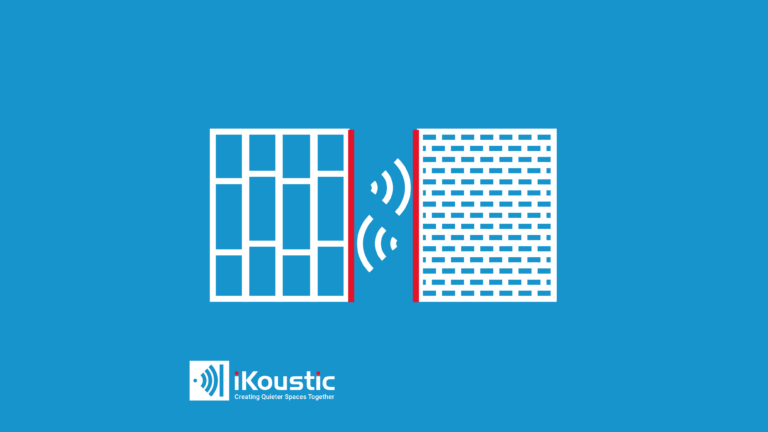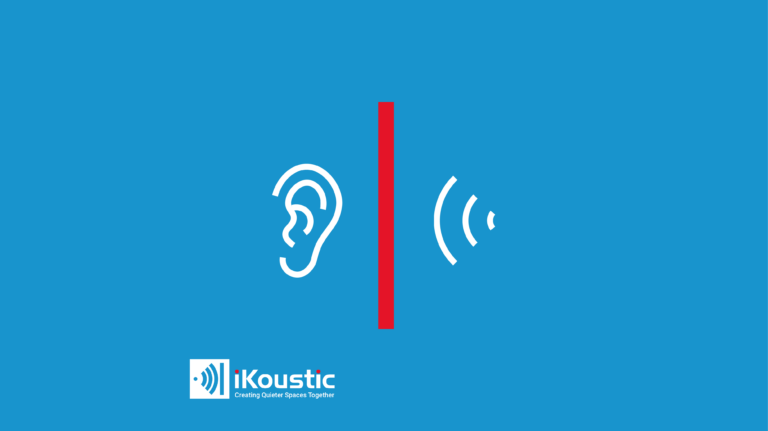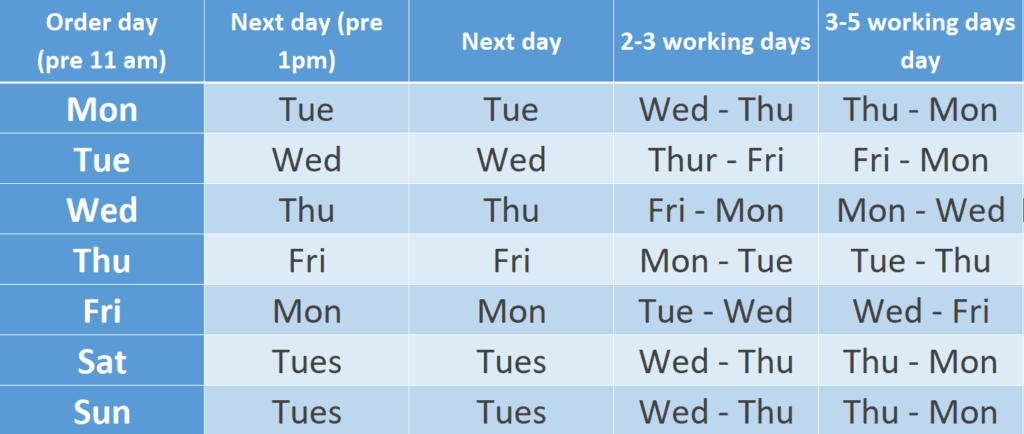Best soundproofing material (Walls, floors, ceilings, echo)
What is the best soundproofing material? Well not to burst anyone’s bubble but there’s no one ‘best soundproofing material’. That’s just not how the science works. Different environments and different noise types need different soundproofing materials. In this post, we’ll talk about the best soundproofing material for some common soundproofing situations. We have a key on the right-hand side you can click to find what’s right for you.
Best soundproofing material for metalwork
The best soundproofing material for metalwork is a vibration-dampening membrane. This is actually quite an easy one. If you have a pipe rattling and resonating or say the panels on the inside of your camper van. You need a material that will dampen all of that vibration and stop the metal from resonating the sound.
For this, you need an acoustic membrane. These are super dense flexible membranes (often with an adhesive backing). They work great as a stand-alone soundproofing material for a job like this. If you have never come across one before they somewhat represent a more rigid and stronger version of Blu tack to touch. You can get specific options for wrapping pipes or smaller rolls and squares for cars and vans.
Best soundproofing material for walls
The best soundproofing material for walls is a soundproofing panel made of more than one material. We wish there was just one material that could soundproof a wall but often it takes a combination of materials and techniques that deliver different qualities. Let’s take a look at some of the most common.
Acoustic Plasterboard
Acoustic plasterboard may appear similar to regular sheets, but it’s notably denser and heavier.
What is it for?
Reducing airborne vibrations
How does it work?
The increased density of acoustic plasterboard enables it to effectively bounce back airborne soundwaves and provide insulation to a given space.
Where is it used?
Acoustic plasterboard finds application on both walls and ceilings, frequently serving as the foundational structure for preformed wall panels.
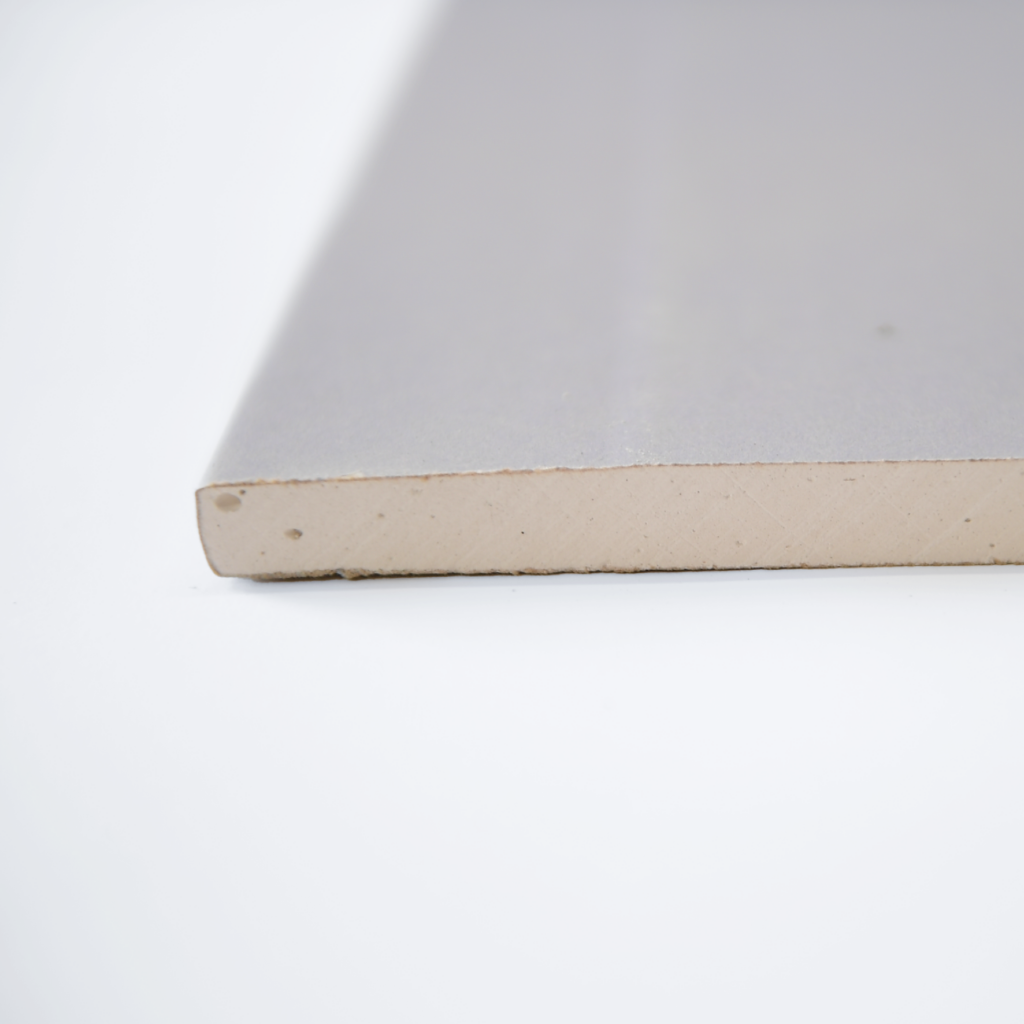
Acoustic Mineral Wool
Mineral wool that has a minimum density of 45kg/m3 is considered acoustic. It is available in different densities and thicknesses and is a fairly rigid material.
What is it for?
Reduce airborne noise
How does it work?
The open structure allows sound vibration to travel through and the micro-friction created between waves and fibres exhausts the sound into other forms of energy, like heat.
Where is it used?
In any open cavities between joist and stud work.
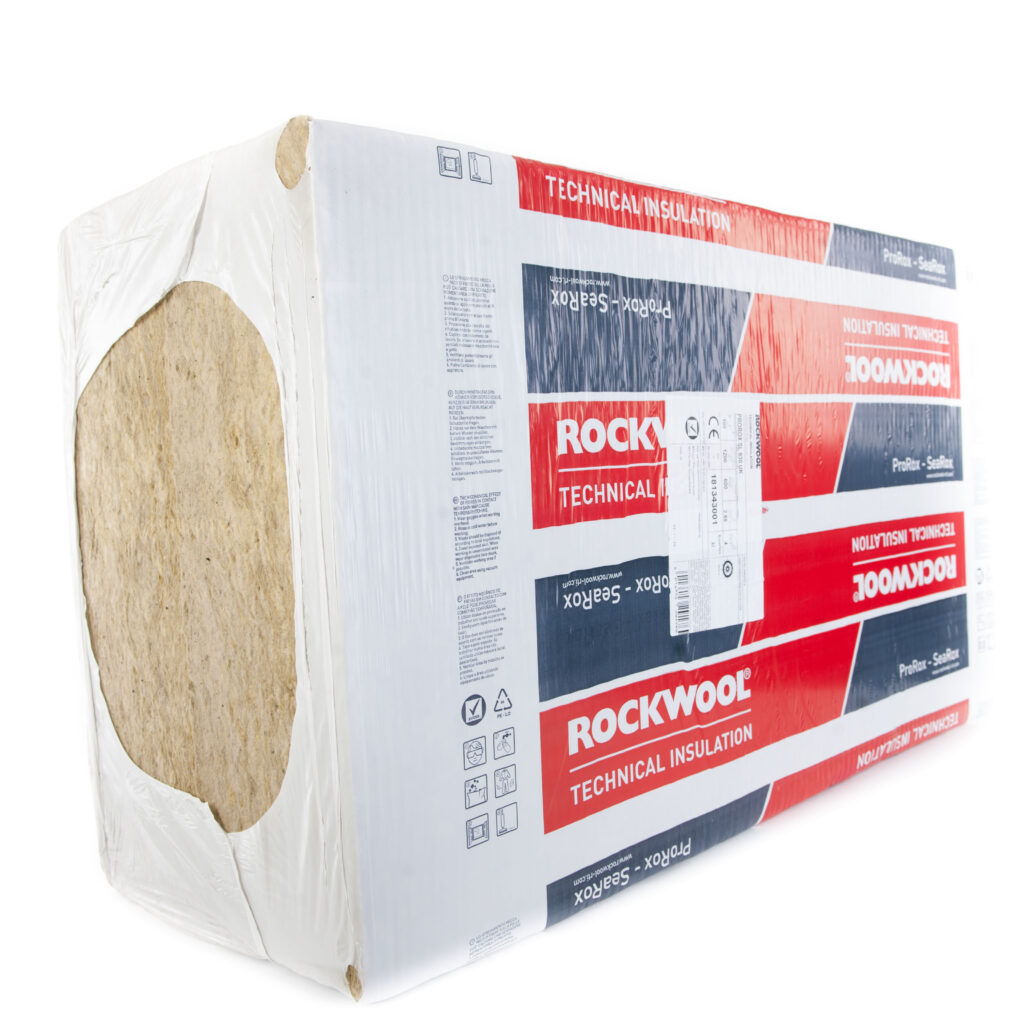
MuteClips
Isolation clips with dual density silicone that support a metal channel, used to support a new wall or ceiling partition.
What is it for?
Airborne noise
How does it work?
Dual density, vibration damping silicone, wraps the screw butt to prevent direct contact between the wall and the metal supporting channel. This isolates vibrations and is the most effective solution for space used.
Where is it used?
Walls and ceilings
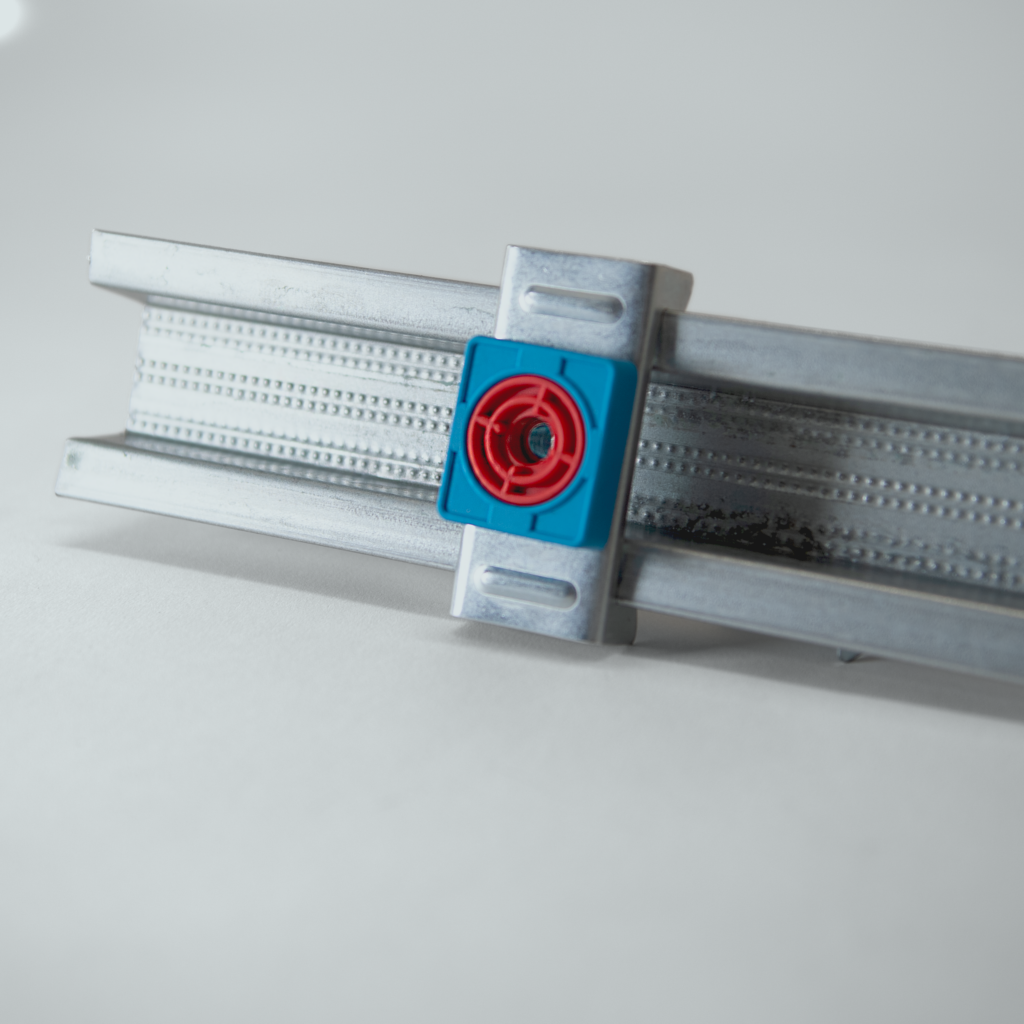
Tecsound
Tecsound is a visco-elastic membrane which comes indifferent weights and with the option for a self-adhesive back.
What is it for?
Reducing airborne and impact
How does it work?
Tecsound has a very mass, for reflecting airborne sound waves. The visco-elastic quality allows the material to flex and absorb impact vibrations.
Where is it used?
Tecsound is a versatile membrane used on walls, floors and ceilings.
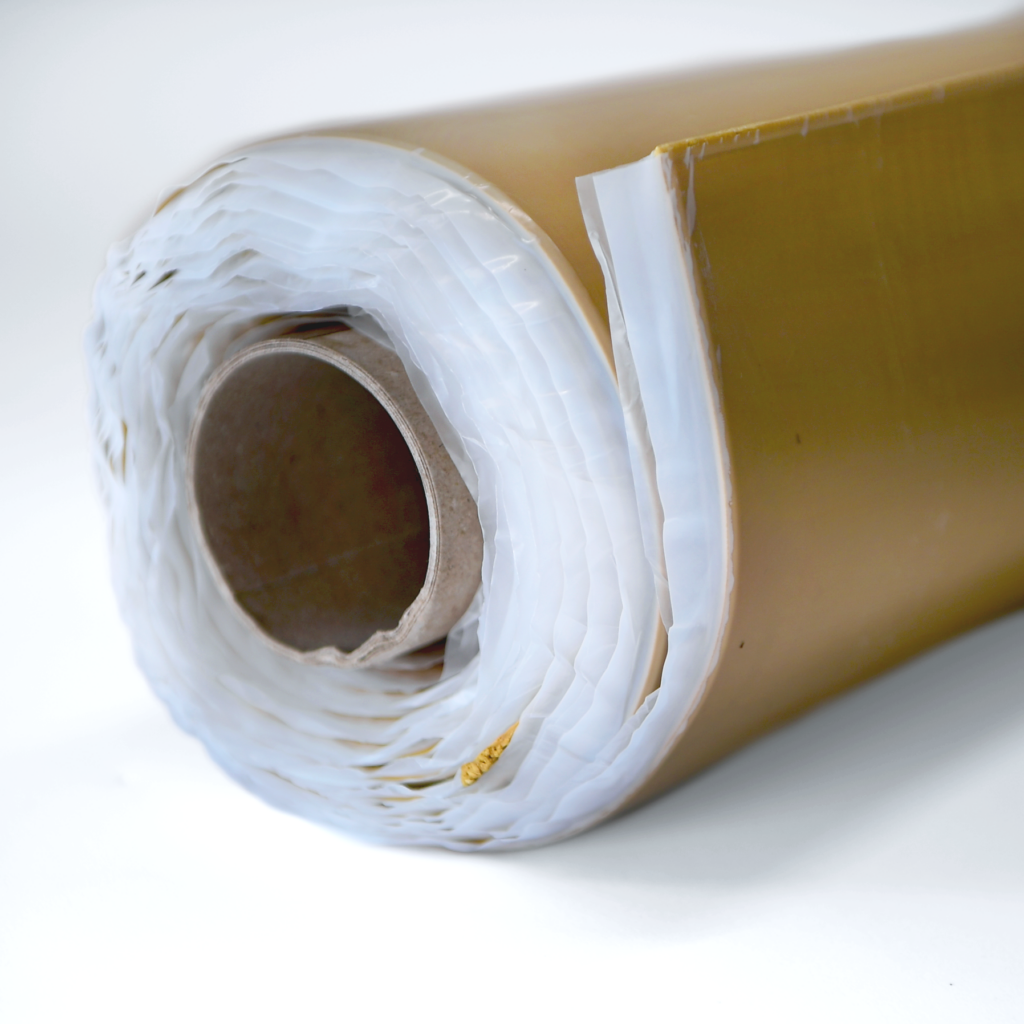
Acoustic Sealant
As a general rule, a 2-5mm gap should be left around the perimeter of installed soundproof panels. Into this gap, acoustic sealant is squeezed.
What is it for?
Flanking transmission
How does it work?
By leaving a gap between material, vibrations cannot pass from one structure to the next. However, an air gap cannot be left either. Acoustic sealant doesn’t set solid and is the perfect, flexible, material to seal the gap.
Where is it used?
Walls and ceilings
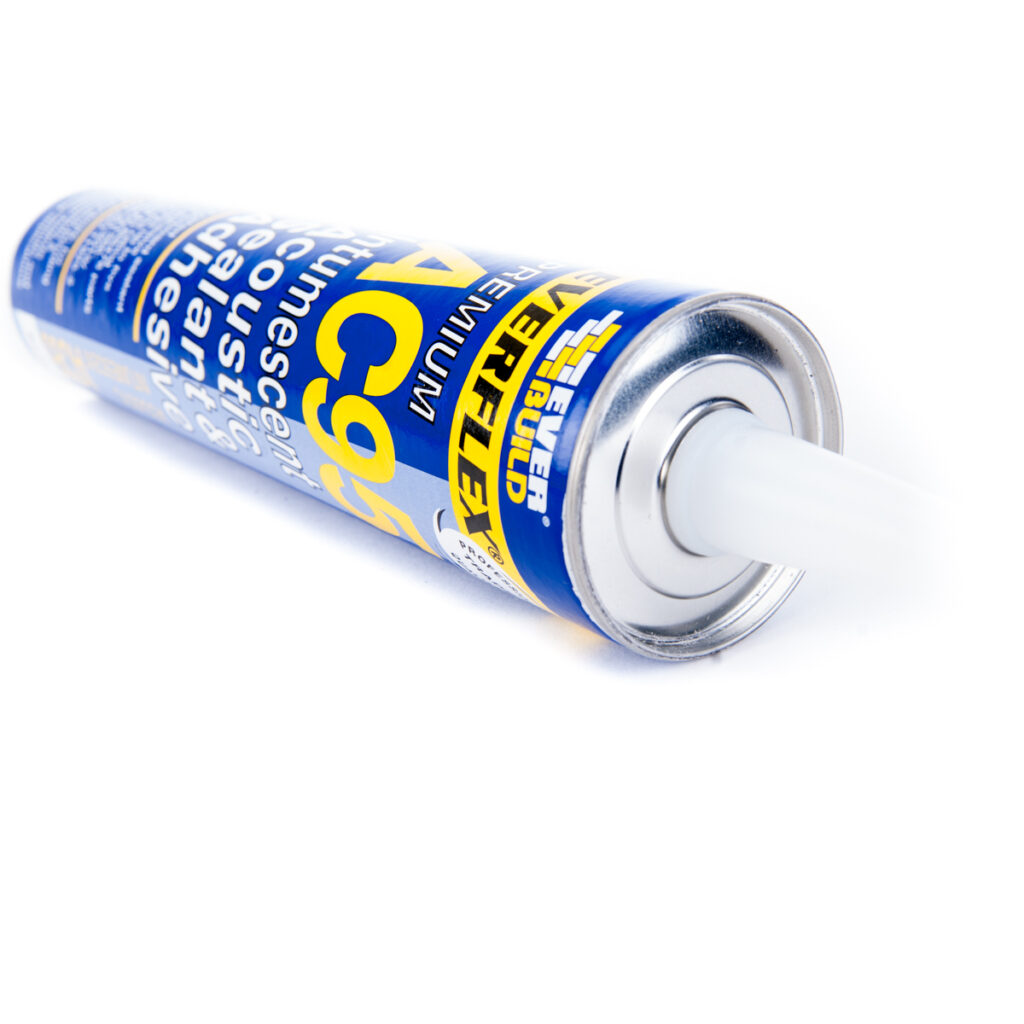
MuteBoard 4
A layer of mass loaded vinyl (wall facing side), a layer of closed cell foam, another layer of MLV (at a different mass) and acoustic plasterboard.
What is it for?
Airborne noise
How does it work?
This soundproof panel creates a resilient acoustic barrier to airborne noise by using three materials with different levels of high mass and a layer of closed cell foam to add flex into the system.
Where is it used?
Ceilings and walls
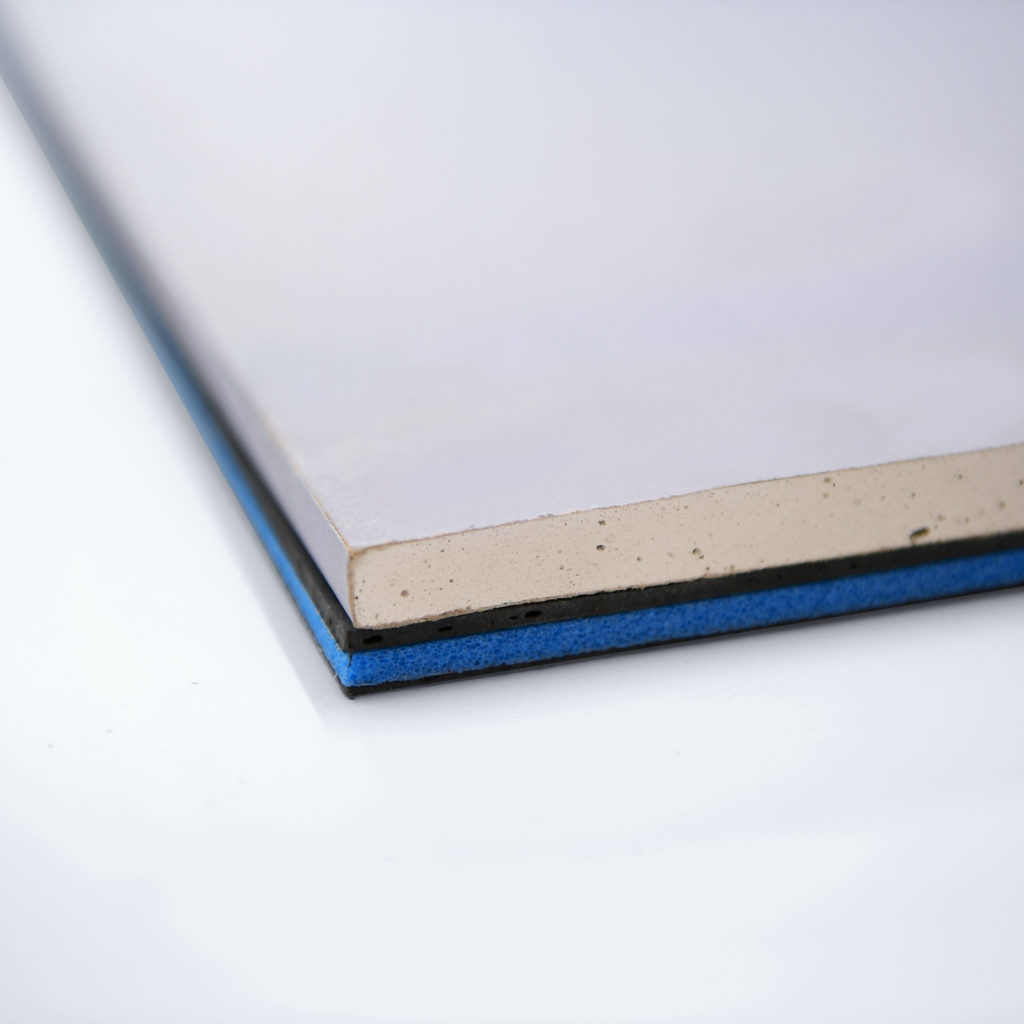
Best soundproofing material floors
Once again we have a combination of materials some perform better against airborne noise and others perform better against impact noise. You can tailor the use of these to suit the noise problem you’re facing. If your footsteps are disturbing the floor below you will need impact-absorbing materials. If you need airborne reduction you will need some sound insulation materials. Let’s see which would be best for each of these applications.
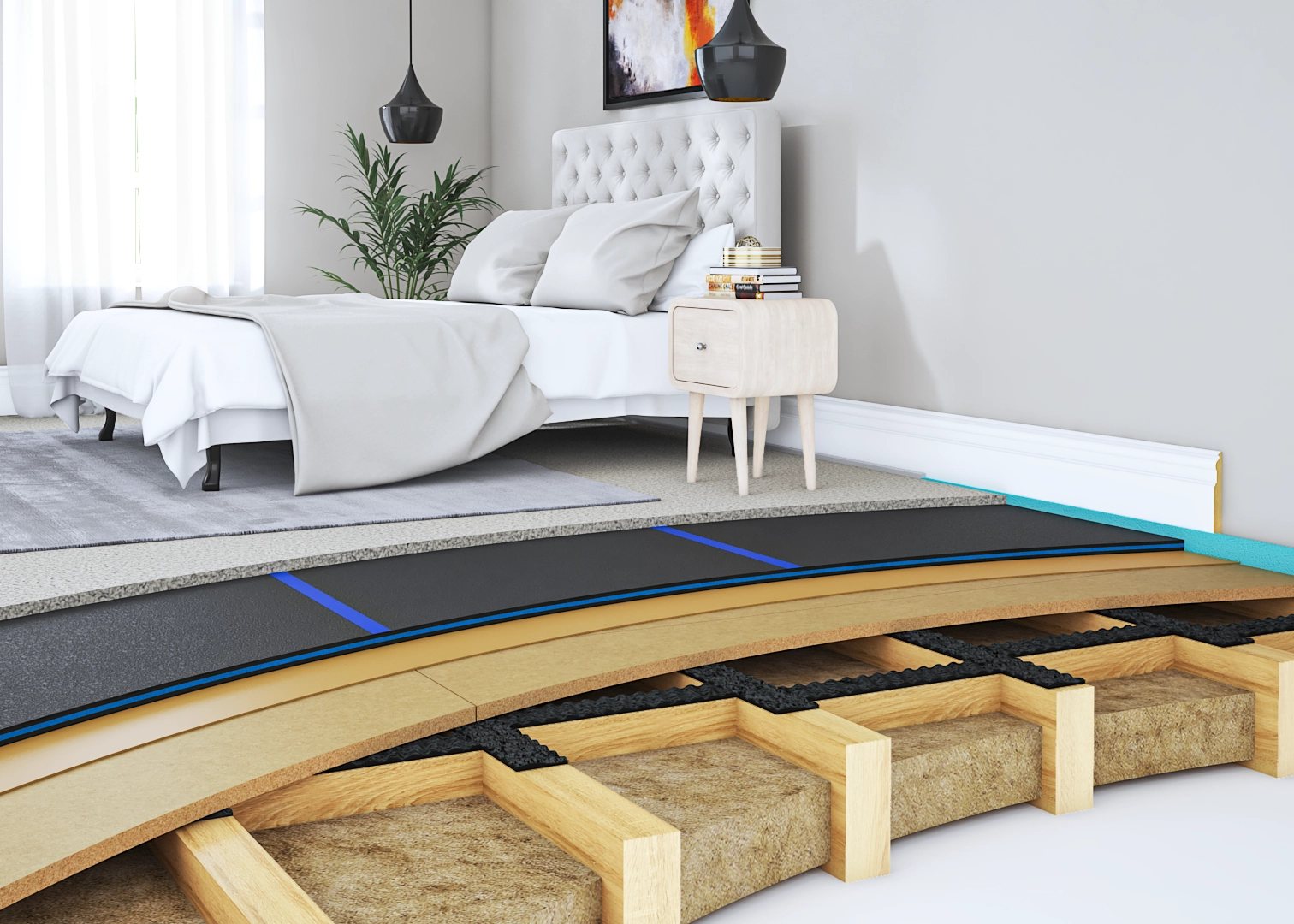
MuteMat 2
A layer of mass loaded vinyl (face up) with a layer of closed-cell foam.
What is it for?
Impact and airborne noise
How does it work?
The MLV reflect airborne noise in and out of the space while the closed-cell foam is able to compress and dissipate vibration energy.
Where is it used?
Floors
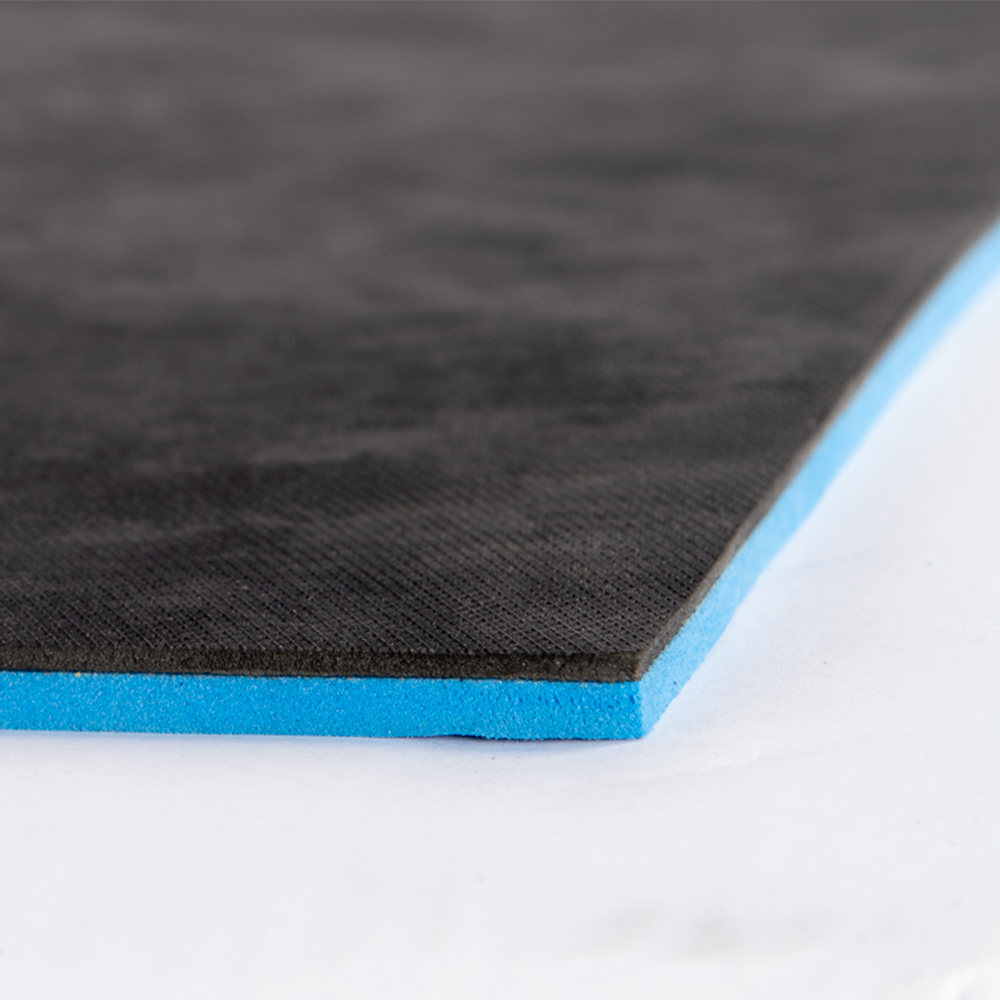
MuteMat 3
A layer of mass loaded vinyl (face up) with a layer of closed-cell foam and more MLV with a different level of mass.
What is it for?
Impact and airborne noise
How does it work?
The MLV reflect airborne noise in and out of the space while the closed-cell foam is able to compress and dissipate vibration energy.
Where is it used?
Floors
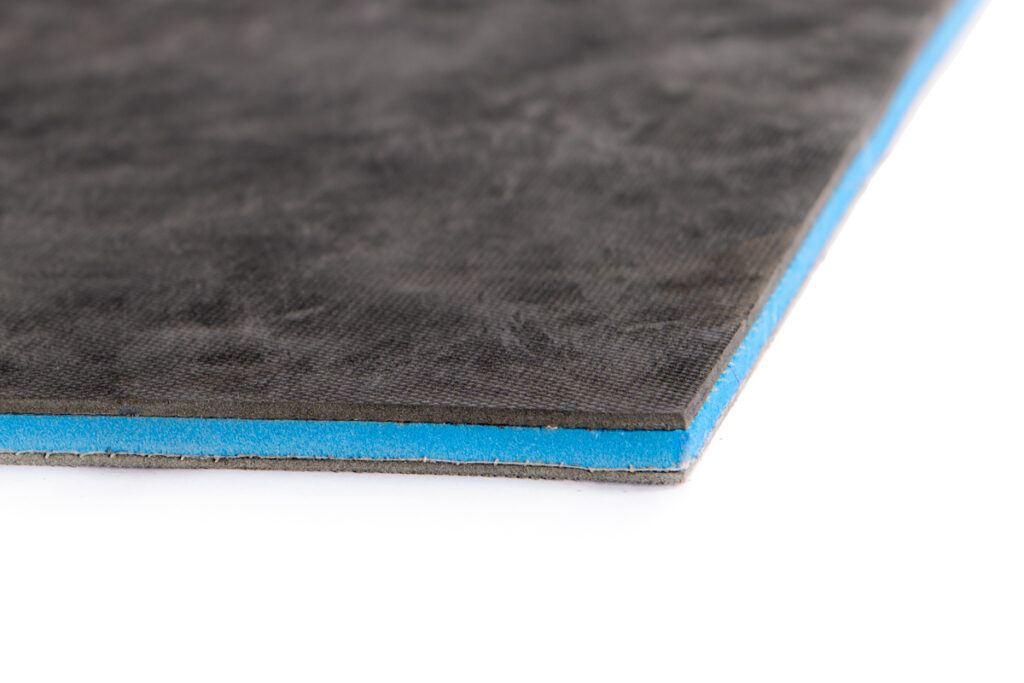
Isolation Strips – Rubber Crumb
Isolation strips can be used on top of wooden joists before the floor is fitted and on stud work to act as a barrier between the wall.
What is it for?
Reducing flanking transmission
How does it work?
Made of the same rubber crumb as underlays, this non-resonant rubber reduces the transference of vibrations between flanking structures.
Where is it used?
Tops of floor joists and outside or stud work.
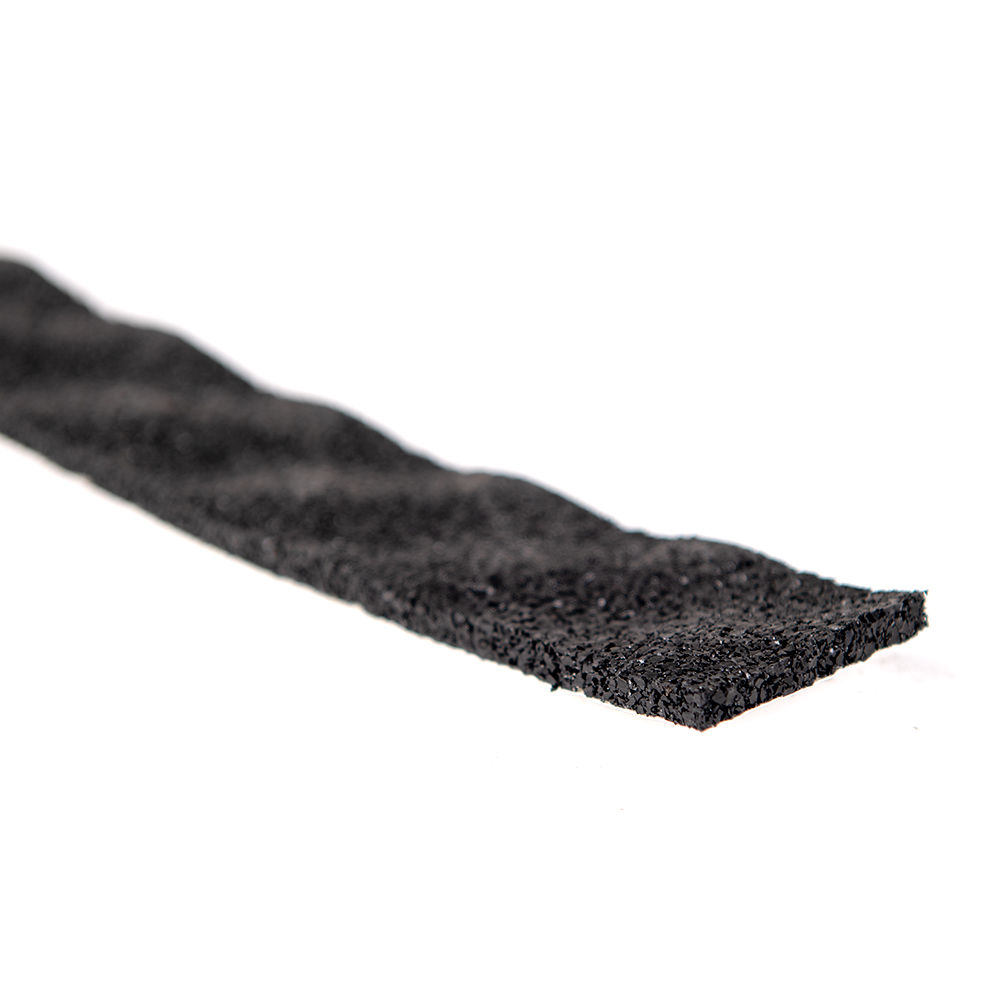
Perimeter Flanking Band
Perimeter flanking band is a foam material used to isolate vibrations and reduce the transference from floor to walls.
What is it for?
Reducing flanking transmission
How does it work?
It lines the perimeter of a floor to prevent direct contact with the wall. The band helps absorb and reduce vibration energy from the floor to the connecting wall.
Where is it used?
Around the perimeter of the room.
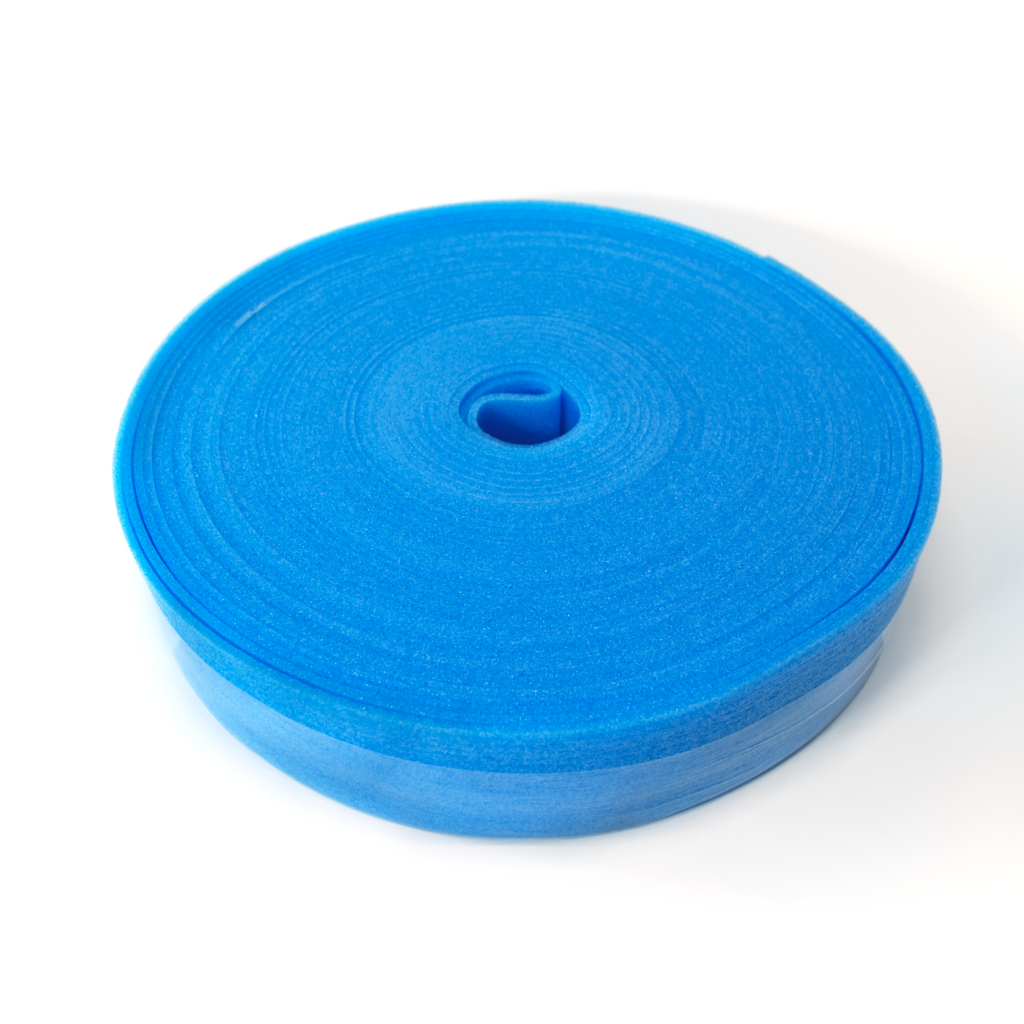
Best soundproofing material for ceilings
The best soundproofing material for ceilings it is essentially the same as walls. In addition to the soundproofing panels, we will however introduce two new isolation clips that give you the ability to raise or lower the height of your new soundproof ceiling.
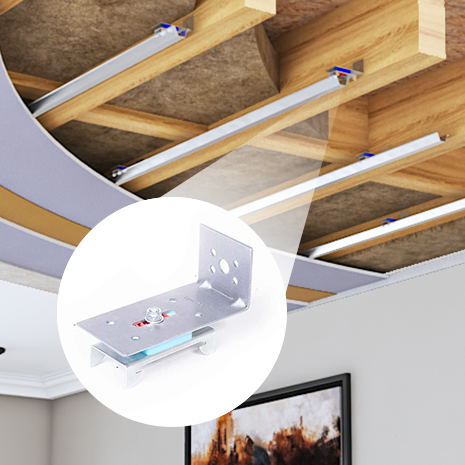
The MuteClip LP is used to reduce the loss of ceiling height when installing an isolated ceiling frame. This reduces the ceiling loss to a minimum of 5mm.
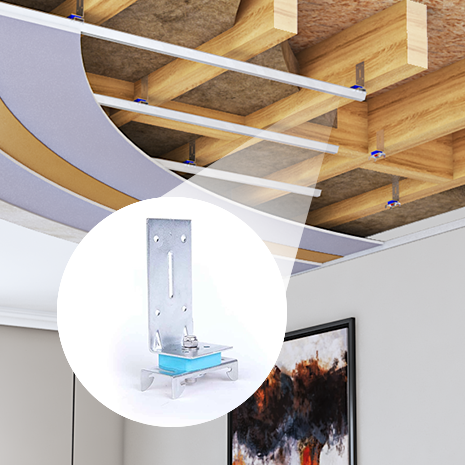
The MuteClip XP is used for creating an acoustic dropped ceiling (Up to 65mm drop). Ideal if you have uneven joists and need to create a level ceiling or have pipework you need to install below your joists.
Best soundproofing material for echo reduction
From natural materials like wood to highly processed materials like mineral wool there are many materials that work great for sound absorbing. We’ve all experienced a room with lots of reverb think how a church may have lots of echo or when you view an empty property it sounds empty and echoey. This is due to an abundance of hard surfaces causing the sound waves to bounce around instead of being absorbed into something soft.
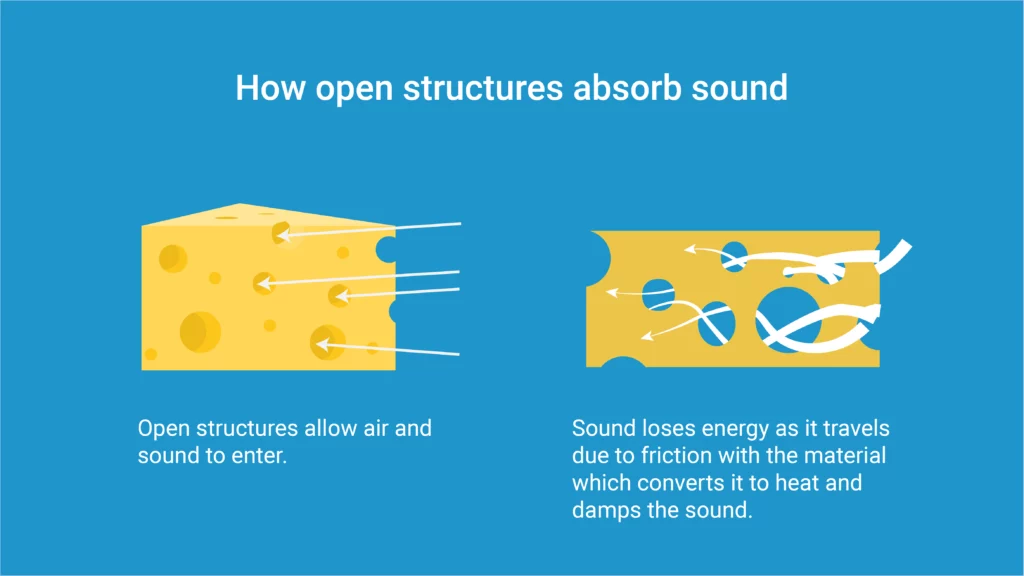
A common misconception in soundproofing is that egg box foam on the walls will reduce the noise you hear from neighbours. We always see spaces like recording studios on TV have these panels and given that most people would call this soundproofing foam you’d be forgiven for thinking that’s what it Is! In reality that foam is there to absorb sound to give the room a more close-in less echoey cosy feel. It’s not just recording studios that use these panels though offices, restaurants, sports halls and countless other spaces use absorption panels. Now you know about them you’ll no doubt start to see these panels everywhere.
Here at iKoustic our preferred material for sound absorption is polyester. It can be made from recycled goods and repurposed into beautiful and functional panels. It can perform as a class A absorber. It’s easy to clean. Unlike Mineral wool you don’t have to worry about dangerous loose fibres. Below you can see our range of Still Not panels that contain 60% recycled polyester.
Best soundproofing material for outside
That’s correct people sometimes need soundproofing outside. It makes sense when you think about giant fences next to motorways, railroads, HVAC equipment and loading bays. For most people suffering with garden noise a thick well built fence will help but for heavy duty industrial use where planning permission requires an acoustic barrier it’s common to use a Noistop fence form Rockwool. This barrier contains high-density Rockwool contained in a fine mesh and steel body. It not only insulates the sound but it also absorbs it. This means you don’t get sound bouncing around as much. If you would like more information on Noistop feel free to contact out sales team.



